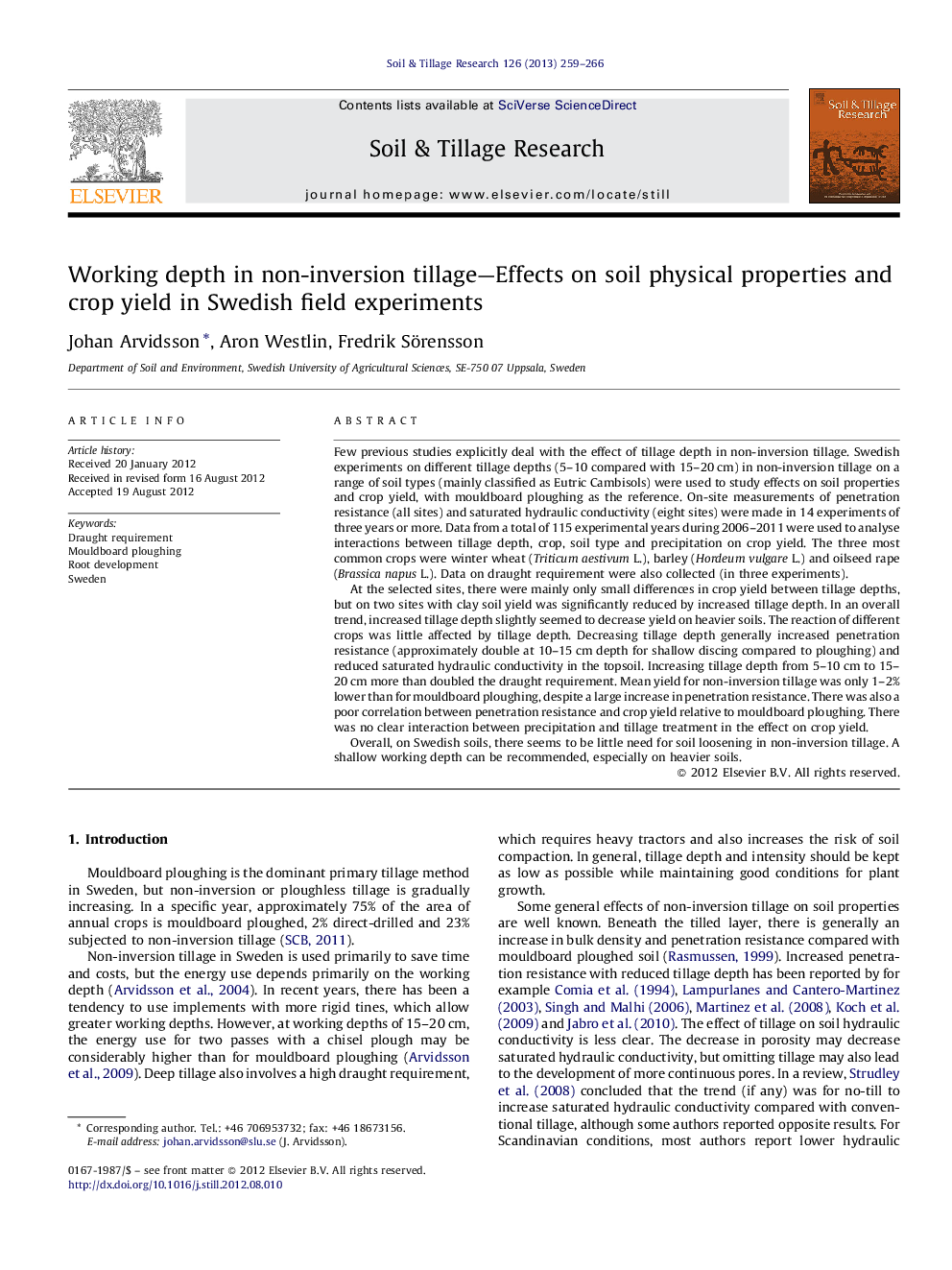| کد مقاله | کد نشریه | سال انتشار | مقاله انگلیسی | نسخه تمام متن |
|---|---|---|---|---|
| 305987 | 513064 | 2013 | 8 صفحه PDF | دانلود رایگان |

Few previous studies explicitly deal with the effect of tillage depth in non-inversion tillage. Swedish experiments on different tillage depths (5–10 compared with 15–20 cm) in non-inversion tillage on a range of soil types (mainly classified as Eutric Cambisols) were used to study effects on soil properties and crop yield, with mouldboard ploughing as the reference. On-site measurements of penetration resistance (all sites) and saturated hydraulic conductivity (eight sites) were made in 14 experiments of three years or more. Data from a total of 115 experimental years during 2006–2011 were used to analyse interactions between tillage depth, crop, soil type and precipitation on crop yield. The three most common crops were winter wheat (Triticum aestivum L.), barley (Hordeum vulgare L.) and oilseed rape (Brassica napus L.). Data on draught requirement were also collected (in three experiments).At the selected sites, there were mainly only small differences in crop yield between tillage depths, but on two sites with clay soil yield was significantly reduced by increased tillage depth. In an overall trend, increased tillage depth slightly seemed to decrease yield on heavier soils. The reaction of different crops was little affected by tillage depth. Decreasing tillage depth generally increased penetration resistance (approximately double at 10–15 cm depth for shallow discing compared to ploughing) and reduced saturated hydraulic conductivity in the topsoil. Increasing tillage depth from 5–10 cm to 15–20 cm more than doubled the draught requirement. Mean yield for non-inversion tillage was only 1–2% lower than for mouldboard ploughing, despite a large increase in penetration resistance. There was also a poor correlation between penetration resistance and crop yield relative to mouldboard ploughing. There was no clear interaction between precipitation and tillage treatment in the effect on crop yield.Overall, on Swedish soils, there seems to be little need for soil loosening in non-inversion tillage. A shallow working depth can be recommended, especially on heavier soils.
► Reduced tillage depth increased penetration resistance and reduced saturated hydraulic conductivity.
► Differences in tillage depth generally had little effect on yield.
► Correlations between crop yield and soil physical properties were weak.
► On clay soils, increased tillage in some cases reduced yield.
► Disc implements slightly reduced yield compared to chisel ploughs.
Journal: Soil and Tillage Research - Volume 126, January 2013, Pages 259–266